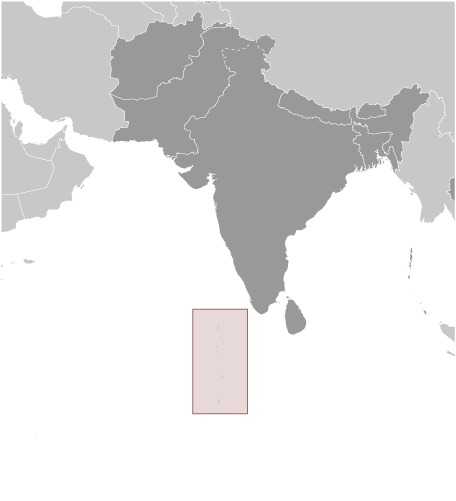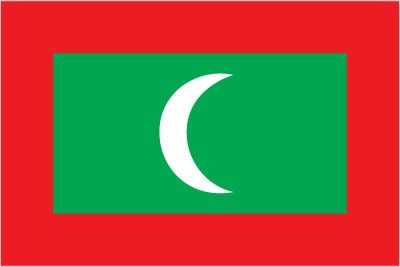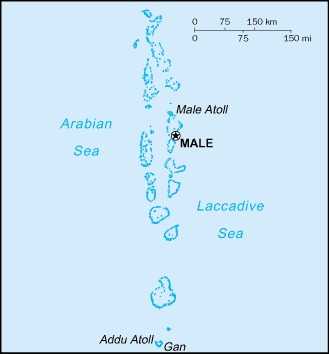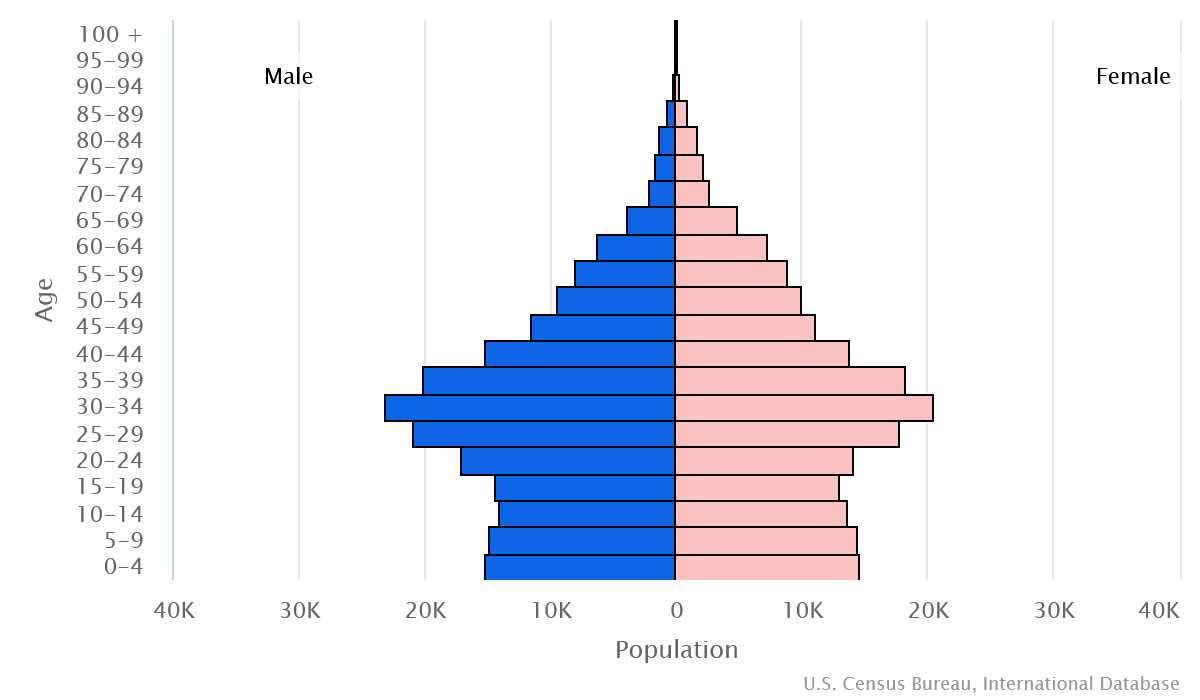Introduction
Background
A sultanate since the 12th century, the Maldives archipelago became a British protectorate in 1887. Three years after independence in 1965, the islands established themselves as a republic.
Geography
Area
total: 298 sq km
land: 298 sq km
water: 0 sq km
Climate
tropical; hot, humid; dry, northeast monsoon (November to March); rainy, southwest monsoon (June to August)
Natural resources
fish
People and Society
Population
total: 388,858
male: 197,739
female: 191,119 (2024 est.)
Ethnic groups
homogeneous mixture of Sinhalese, Dravidian, Arab, Australasian, and African resulting from historical changes in regional hegemony over marine trade routes
Languages
Dhivehi (official, closely related to Sinhala, script derived from Arabic), English (spoken by most government officials)
Religions
Sunni Muslim (official)
Population growth rate
-0.2% (2024 est.)
Government
Government type
presidential republic
Capital
name: Male
Executive branch
chief of state: President Mohamed MUIZZU (since 17 November 2023); Vice President-elect Hussain Mohamed LATHEEF (since 30 September 2023); the president is both chief of state and head of government
head of government: President Mohamed MUIZZU (since 17 November 2023); Vice President-elect Hussain Mohamed LATHEEF (since 30 September 2023)
Legislative branch
description: unicameral Parliament or People's Majlis (93 seats; members directly elected in single-seat constituencies by simple majority vote to serve 5-year terms)
Economy
Economic overview
upper middle-income Indian Ocean island economy; major tourism, fishing, and shipping industries; high public debt; systemic corruption; crippled by COVID-19; ongoing deflation; poverty has tripled since pandemic began
Real GDP (purchasing power parity)
$11.142 billion (2022 est.)
$9.781 billion (2021 est.)
$7.104 billion (2020 est.)
Real GDP per capita
$21,300 (2022 est.)
$18,800 (2021 est.)
$13,800 (2020 est.)
Agricultural products
papayas, vegetables, roots/tubers nes, nuts, fruit, other meat, tomatoes, coconuts, bananas, maize
Industries
tourism, fish processing, shipping, boat building, coconut processing, woven mats, rope, handicrafts, coral and sand mining
Exports
$5.096 billion (2022 est.)
$3.985 billion (2021 est.)
$1.787 billion (2020 est.)
Exports - partners
Thailand 24%, United States 13%, China 12%, France 11%, Germany 11%, Italy 5%, United Kingdom 5% (2019)
Exports - commodities
skipjack and stripe-bellied bonito, fish fillets, propane, tuna, butane, scrap iron (2021)
Imports
$4.904 billion (2022 est.)
$3.484 billion (2021 est.)
$2.449 billion (2020 est.)
Imports - partners
United Arab Emirates 24%, China 16%, Singapore 14%, India 11%, Malaysia 6%, Thailand 5% (2019)
Imports - commodities
refined petroleum, fruits, furniture, broadcasting equipment, lumber (2019)
Exchange rates
rufiyaa (MVR) per US dollar -
Exchange rates:
15.387 (2022 est.)
15.373 (2021 est.)
15.381 (2020 est.)
15.382 (2019 est.)
15.391 (2018 est.)
Page last updated: Wednesday, May 01, 2024




